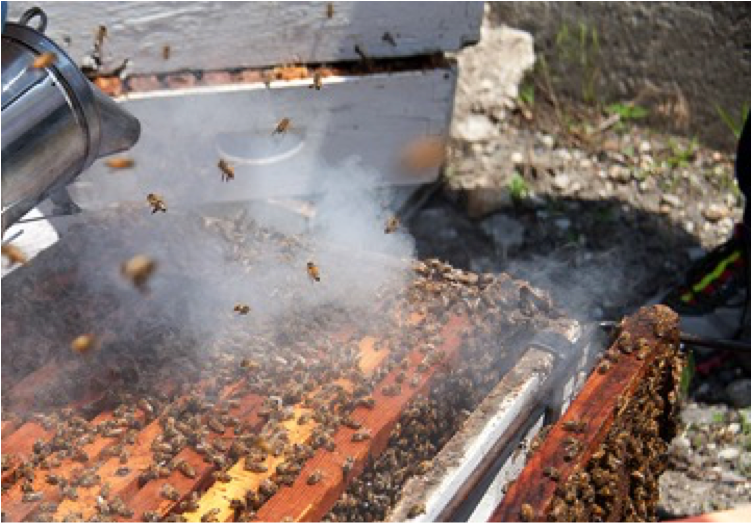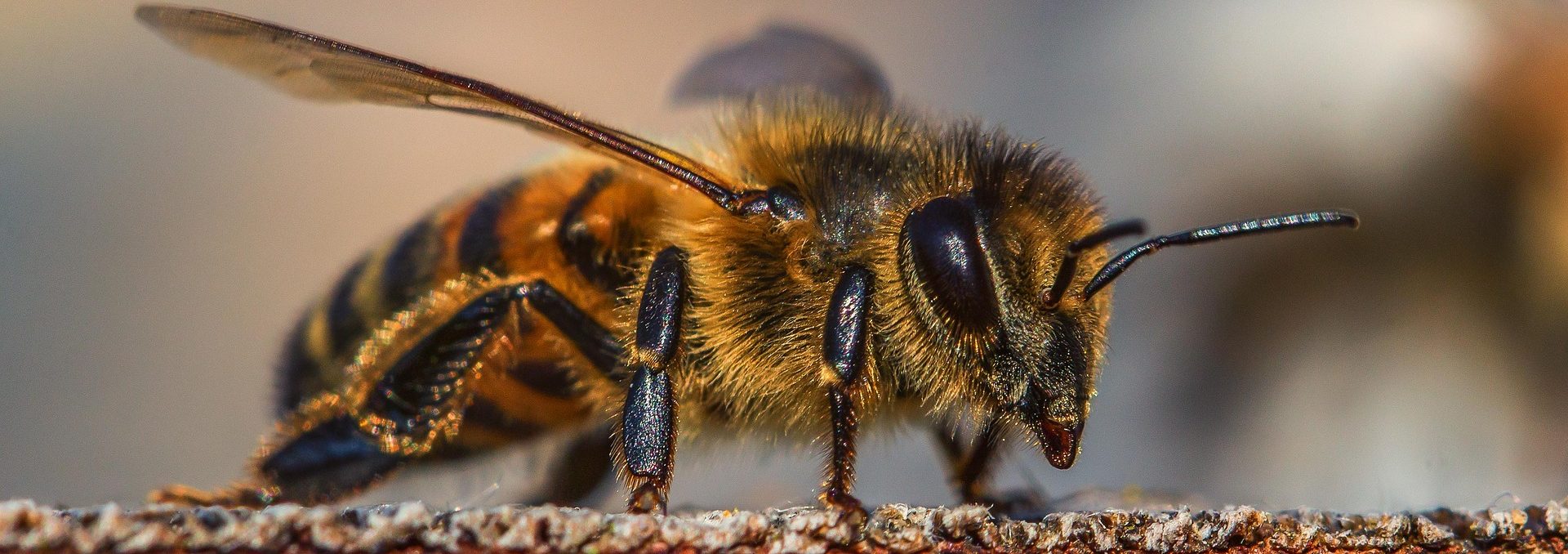Inspecting a Hive
 The approach for inspecting your beehive should not vary much from one visit to another. You should follow certain procedures and always look for certain things. Read our pages relating to bee diseases. Don’t forget your bee Suit…
The approach for inspecting your beehive should not vary much from one visit to another. You should follow certain procedures and always look for certain things. Read our pages relating to bee diseases. Don’t forget your bee Suit…
Hive inspections should be carried out on warm dry days with little or no wind. with enough daylight and warmth remaining to allow the hive to settle before sundown.
Opening your hive.
Standing to the side of the hive with your smoker blow several puffs of thick, cool smoke across the hive’s entrance. Don’t over smoke them. You’re not trying to choke them...Next using a hive tool remove the hive lid (gently) Set the cover upside down on the ground. and give another couple of puffs of smoke across the frames.
The fact that smoke calms bees has been known since ancient times; however, the scientific explanation was unknown until the 20th century and is still not fully understood. Smoke masks alarm pheromones, that are released by guard bees or bees that are injured during a beekeeper’s inspection. The smoke creates an opportunity for the beekeeper to open the beehive and work while the colony’s defensive response is interrupted. In addition, smoke initiates a feeding response in anticipation of possible hive abandonment due to fire. When a bee consumes honey the bee’s abdomen distends, making it difficult to make the necessary flexes to sting.
Source Wikipedia
Remove the top box(s) of the hive to access the brood box, if needed puff a little more smoke across the Queen excluder*.
Remove the Excluder.
Begin your inspection of the hive by removing a frame.
Use the curved end of your hive tool between frames to loosen them. you may need to twist the tool between frames to separate them from each other. Try not to squash too many bees, in particular, be careful not to kill you Queen.
Inspect the frame, repeat this with each frame in turn. Use both hands to pick up the frames by the end bars.
Now that you’ve removed the first frame, gently rest it on the hive stand, leaning it vertically up against the hive. It’s okay if bees are on it. They’ll be fine. Alternatively, if you have a frame hanger use it to temporarily store the frame.
During the inspection, you should check the hive for health issues, possibly look for the Queen or look for evidence such as larvae to ensure she is laying.
Following the inspection gently reassemble your hive.
*This only applies to hives with supers installed
